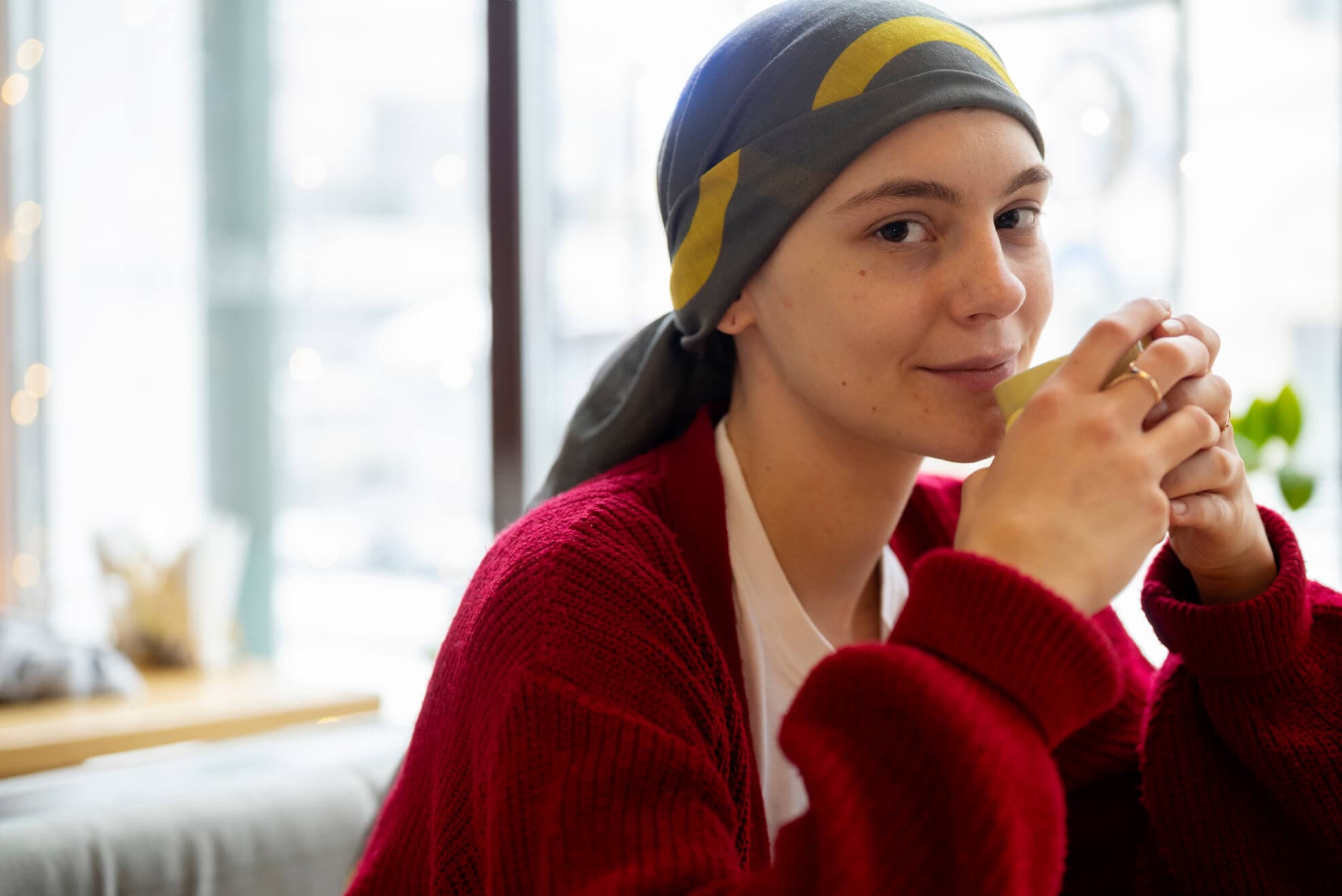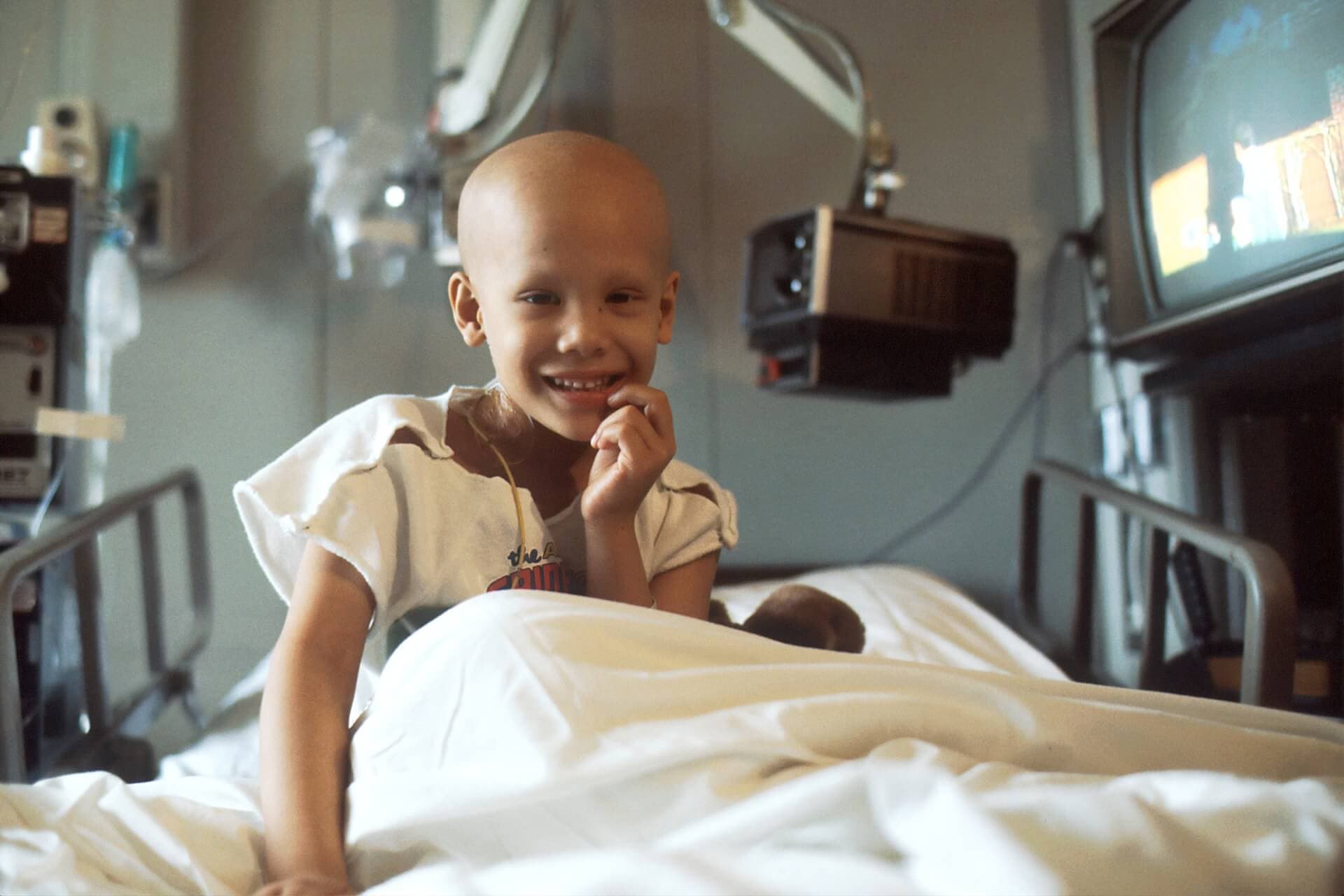Chemotherapy

General information
Chemotherapy is a type of cancer treatment that uses medical drugs to destroy cancer cells. It works by interrupting the process of rapid cell division that is characteristic of cancer cells. Chemotherapy drugs are given orally, intravenously, or directly into specific areas (for example, in the peritoneal or pleural cavity), depending on the type and spread of the cancer.
This form of treatment can be used alone or in combination with other methods such as surgery or radiation therapy to more effectively fight cancer.
Chemotherapy helps not only to destroy cancer cells, but also to control their spread or limit cancer symptoms.
Chemotherapy in breast cancer
Chemotherapy uses powerful drugs called cytostatics, or chemotherapy agents, to kill cancer cells and stop their growth and division. It is usually carried out in cycles, with periods of rest in between to allow the body to recover. Chemotherapy may be used before surgery to shrink tumors, after surgery to destroy any remaining cancer cells, or as the main treatment for advanced or metastatic breast cancer.
The most widespread types of chemotherapy are the so-called red therapy, which gets its name from the bright red colour of the drugs used in it, white therapy, and that with drugs called platinum. It can be given before surgery to shrink a large tumour, make surgery easier and/or reduce the risk of recurrence.
A neoadjuvant or adjuvant chemotherapy regimen or schedule usually consists of a combination of drugs given in a specific number of cycles over a specific period of time. Chemotherapy can be given in many different regimens depending on which has worked best in clinical trials for that specific type of regimen. It can be given once a week, once every 2 weeks, or once every 3 weeks. There are many types of chemotherapy used to treat breast cancer. Common drugs include the following, most of which are available as generic medicine:
- Docetaxel
- Paclitaxel
- Doxorubicin
- Epirubicin
- Capecitabine
- Carboplatin
- Cyclophosphamide
- Fluorouracil
- Methotrexate
Therapies that target the HER2 receptor can be administered with chemotherapy for HER2-positive breast cancer. An example is the antibody trastuzumab. Combination regimens for early stage HER2-positive breast cancer may include:
- AC-TH - doxorubicin, cyclophosphamide, paclitaxel or docetaxel, trastuzumab
- AC-THP -doxorubicin, cyclophosphamide, paclitaxel or docetaxel, trastuzumab ,pertuzumab
- TCH - paclitaxel or docetaxel, carboplatin, trastuzumab
- TCHP - paclitaxel or docetaxel, carboplatin, trastuzumab, pertuzumab
- TH - paclitaxel, trastuzumab
Immunotherapies can be administered with chemotherapy for triple negative breast cancer. An example is the antibody pembrolizumab. Combination regimens for triple negative breast cancer may include:
- TC/pembro-AC/pembro
- TC/pembro-EC/pembro
Chemotherapy for cervical cancer
What are the treatment options for early stage cervical cancer?
Surgery
Early stage RMS is usually treated by surgically removing the cancer. The goal of surgery is to remove the cancer as well as healthy tissue around it. After surgery, the removed tissue is examined under a microscope to check that all the cancer has been removed.
For patients with stage IA1 cervical cancer without lymphovascular invasion, a simple hysterectomy may be offered, in which the cervix and uterus are removed. Patients with stage IA1 disease with lymphovascular invasion may also have some pelvic lymph nodes removed to check whether the cancer has spread to them. A procedure called sentinel lymph node biopsy (SLND), which identifies, removes and checks for cancer cells the first lymph nodes most likely to have cancer cells spread from the tumour, may also be considered in patients with stage I disease with tumour size <4 cm
Patients with stage IA2, IB and IIA cervical cancer usually undergo radical hysterectomy with lymph node dissection. Radical hysterectomy involves removal of the uterus, cervix, all surrounding tissue that holds the uterus in place, the upper part of the vagina, and all lymph nodes around the uterus. The ovaries and fallopian tubes may also be removed.
Adjuvant treatment
After surgery to remove cervical cancer, some patients may be referred for adjuvant chemotherapy treatment. Adjuvant chemoradiotherapy is usually recommended for patients who are thought to be at high risk of cancer recurrence - for example, if cancerous cells are found in the tissue removed during surgery within the surgical margins or in lymph nodes.
Fertility preservation
Because cervical cancer often affects women of childbearing age, an important consideration before surgery is the decision regarding fertility preservation.
Patients who wish to preserve their fertility and have stage IA1 cervical cancer without lymphovascular invasion are usually treated with conization or simple trachelectomy. Simple trachelectomy involves removal of the cervix and endocervical canal, leaving the uterus intact. Patients with stage IA2 disease may be treated with conization or radical trachelectomy with pelvic lymph node dissection, in which most of the cervix and upper vagina are removed.
Stage IB1 cancers < 2 cm can be treated with radical trachelectomy with pelvic lymph node dissection, while stage IB tumors > 2 cm may require preoperative (neoadjuvant) treatment with chemotherapy before conization or trachelectomy.
It is important to understand that fertility-sparing surgery for early-stage cervical cancer is still an experimental approach. Your doctor will need to explain to you in detail the advantages and disadvantages of the available options. Fertility-preserving surgery is only offered to women with a strong desire to become pregnant; if your desire to have a child is fulfilled, then standard radical surgery is considered the best treatment option for early-stage cervical cancer.
What are the treatment options for locally advanced cervical cancer?
Chemotherapy
Chemoradiotherapy is the standard primary treatment for patients with locally advanced cervical cancer, with cisplatin-based chemoradiotherapy being the most commonly used regimen. Both external beam radiotherapy and brachytherapy can be used in this situation.
Neoadjuvant chemotherapy
In some patients with locally advanced disease, neoadjuvant chemotherapy may be administered to reduce the size of the tumour before subsequent surgical removal. In some patients, neoadjuvant chemotherapy followed by radiotherapy may also be considered; this approach is being investigated in ongoing clinical trials but is not currently a common treatment strategy.
What are the treatment options for metastatic cervical cancer?
The goal of treatment for metastatic cervical cancer is to relieve symptoms and improve quality of life
Chemotherapy
Palliative chemotherapy is usually given to patients who are able to tolerate the treatment. The chemotherapy drugs paclitaxel and cisplatin are often used as first-line treatment for metastatic disease, in combination with a newer targeted therapy called bevacizumab. Other chemotherapy drugs that can be used in this situation include carboplatin and topotecan.
What should I do if I need more treatment?
After the treatment is finished, your doctor will schedule follow-up examinations. During these appointments you will usually have a clinical examination, including an examination of your pelvic and rectal area. Some patients may also have a CT scan or PET/CT scan - your doctor will discuss this with you. Your doctor will let you know how often you should return for further check-ups, but a typical schedule for check-ups includes check-ups every 3-6 months for the first 2 years after treatment, every 6-12 months after 3 years and annually after 5 years.
Despite the best possible treatment at diagnosis, the cancer is still likely to return. Cancer that comes back is called a recurrence. The treatment you will be offered depends on the extent of the recurrence. When the tumour comes back as a recurrence in one place in the pelvis after primary surgery, you may be offered radiotherapy or pelvic exenteration (removal of the bladder, part of the bowel, ovaries, uterus, cervix and vagina). Recurrent tumours in distant organs are considered metastatic cancer and you may be offered chemotherapy and targeted therapy.
After cervical cancer treatment, you may feel very exhausted and emotional. Give your body time to recover and make sure you get enough rest, but there's no reason to limit your physical activity if you feel well. It's important to take good care of yourself and get the support you need through good food, less stress, more time to rest and with family, and physical activity.
Remission and likelihood of relapse
Remission is a condition in which cancer cannot be detected in the body and there are no symptoms. This may also be called no evidence of disease or NED.
Remission can be temporary or permanent. This uncertainty makes many people worry that the cancer will come back. While many remissions are permanent, it's important to talk to your doctor about the possibility of the cancer coming back. An important part of follow-up care is monitoring for recurrence, which is done according to national health recommendations in your country.
If the cancer comes back after the initial treatment, it is called a recurrent cancer. Recurrent cancer can reappear in the same place ( local recurrence), nearby (regional recurrence), or in another place (distant recurrence).
If a relapse occurs, a new cycle of testing will begin to learn as much as possible about your current condition. Once this testing is done, you and your doctor will discuss treatment options. Your treatment plan may include the treatments described above, such as surgery, targeted therapy, and radiation therapy, but they may be used in a different combination or administered at a different pace.
Chemotherapy for lung cancer
Chemotherapy is the use of anti-cancer (cytotoxic) drugs to destroy cancer cells. These drugs interfere with the way cancer cells grow and divide. They also affect normal cells. This causes side effects.
What chemotherapy drugs are used for lung cancer
Most people with this diagnosis take a combination of at least two medications. Some people can be treated with one medicine. For both types of lung cancer, cisplatin or carboplatin is usually given with one of the following drugs:
- Docetaxel
- Etoposide
- Gemcitabine
- Paclitaxel
- Pemetrexed
- Vinorelbine
Chemotherapy for small cell lung cancer (SCLC)
Chemotherapy is usually the first treatment for small cell lung cancer (SCLC) and can be administered:
- at the same time as radiotherapy (chemotherapy) if the cancer has not spread to other parts of the body
- before radiotherapy to reduce tumour size
- alone, to control advanced cancer, help you live longer and improve symptoms Chemotherapy may also be given after surgery to eliminate any remaining cancer cells. But surgery is not usually possible for SCLC.
The chemotherapy drugs used for SCLC are usually cisplatin or carboplatin, along with a second chemotherapy drug such as etoposide.
SCLC in limited stages (Stages 1-3)
If the cancer is small enough and you are well enough to cope with the side effects, chemoradiation therapy is the most effective treatment. If you can't have both treatments at the same time, you can have chemotherapy first, followed by radiation.
CLC in extensive stage (Stage 4)
In the beginning, stand-alone chemotherapy is usually done. Some people may get it together with an immunotherapy drug, such as atezolizumab. If chemotherapy has helped to reduce the cancer, you may have breast radiotherapy afterwards.
Chemotherapy for non-small cell lung cancer (NSCLC)
Chemotherapy to treat non-small cell lung cancer (NSCLC) may be administered:
- alone or with a targeted or immunotherapy medicine - this can help control advanced cancer, help you live longer and improve symptoms
- after surgery or radiotherapy to reduce the risk of cancer recurrence (called adjuvant chemotherapy)
- before surgery or radiotherapy to shrink the cancer (called neoadjuvant chemotherapy)
- with radiotherapy (chemoradiotherapy) if surgery is not appropriate and the cancer is locally advanced
- with radiotherapy (chemotherapy) before surgery
- after treatment with target therapy drugs if they no longer work
Chemotherapy for ovarian cancer
Chemotherapy involves the use of drugs to destroy cancer cells, usually by preventing the growth, division and formation of more cells or by destroying the cancer cells.
The chemotherapy regimen or schedule usually consists of a certain number of cycles given over a set period of time. A patient may receive 1 drug at a time or a combination of different drugs given at the same time. The type of chemotherapy used depends on several factors. Patients may be given chemotherapy before or after surgery or as a main treatment option.
If chemotherapy stops or slows the cancer, then maintenance therapy with targeted treatments may be used for certain patients (see Targeted therapy below).
Neoadjuvant chemotherapy
Neoadjuvant chemotherapy is a medical term used to describe chemotherapy that is given before surgery. It is done to reduce the size of the tumor before surgery. It is usually done after a biopsy so doctors can determine where the tumor started.
Neoadjuvant chemotherapy is usually given for 3 to 4 cycles before surgery, called interval surgery, is considered. This treatment usually consists of carboplatin given intravenously with paclitaxel or other drugs. The typical treatment cycle is to administer these medications every 3 weeks.
Adjuvant chemotherapy
Adjuvant chemotherapy is the medical term to describe chemotherapy that is given after surgery to destroy any remaining cancer. For these cancers, the specific drugs are usually carboplatin given with paclitaxel or other drugs intravenously. Most of these drugs are given once every 3 weeks.
Adjuvant chemotherapy can also be infused directly into the abdomen through a second port. This is called intraperitoneal or 'IP' chemotherapy. This approach can be used in people with stage III cancer after surgery to remove the tumour. However, the effectiveness of IP chemotherapy has not been well studied.
The treatment plan may also include bevacizumab to adjuvant chemotherapy with carboplatin and paclitaxel, followed by a course of bevacizumab alone. It is up to your medical team to decide what your treatment plan should be.
Chemotherapy for colon cancer
In chemotherapy, strong drugs are used to destroy cancer cells. Chemotherapy for colon cancer is usually given after surgery if the cancer is large or has spread to the lymph nodes. Chemotherapy can kill cancer cells that may be left after surgery. This helps to reduce the risk of the cancer coming back. Chemotherapy may also be used before surgery to reduce the size of the cancer so that it is more easily removed.
Chemotherapy can also be used to relieve symptoms of colon cancer that cannot be removed with surgery or that has spread to other parts of the body. Sometimes it is used together with radiotherapy


